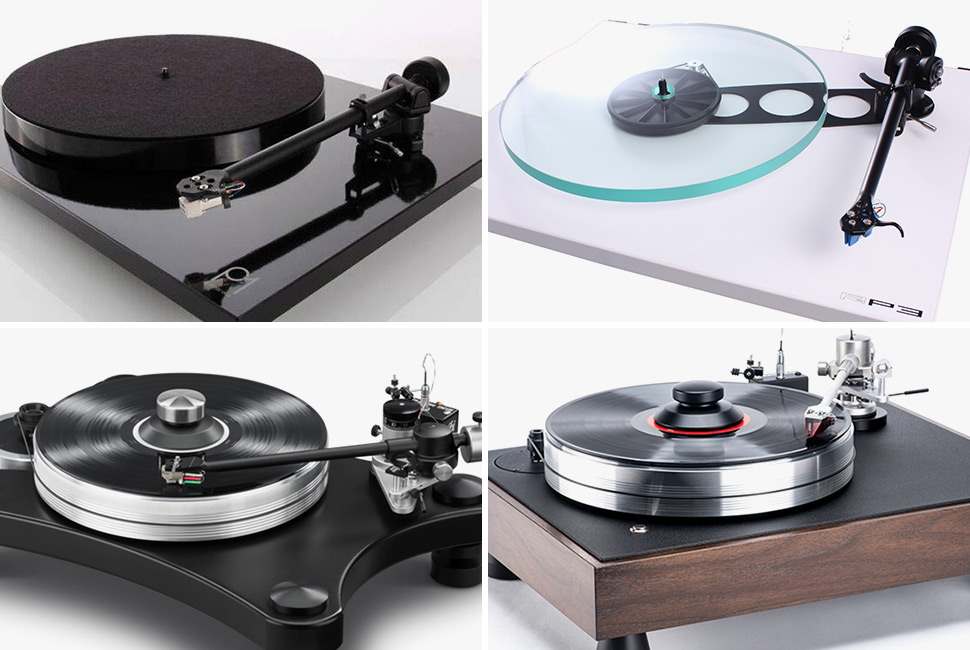To the outsider, paying over $1,000 dollars for a turntable sounds ludicrous — especially when budget options are available at your local Urban Outfitters for around a tenth of that. To find out what warrants these lofty prices and what makes these high-end turntables better, we talked with “Analog” Bob Herman of New York City’s Lyric Audio, a man with decades of experience. Herman is an expert in all things analog audio, and according to Lyric’s website, he “may have readied more Regas for use than anyone in America.” Here’s what all pricey turntables should do, according to him.
Always extract. Herman said that the goal of great turntables is “to extract as much information out of the record grooves onto the stylus and into the cartridge without any interference. In an ideal world you extract all the information that’s in the record groove without loss of information or without adding noise or distortion along the way. But physically, that’s impossible to do, so engineers try provide as stable a platform as possible for the vinyl record and for the cartridge.”
Reduce vibration. Herman breaks down the factors of what makes a turntable deliver great sound into four basic parts. The overarching goal of turntable engineers, when they tackle each of these aspects, is to reduce vibration as much as possible. “It’s all a vibration thing,” Herman said. “And it’s all a matter of materials, and good solid engineering to figure out how to keep all of those vibrations to a minimum. The reason that the better and more expensive turntables sound better is because the engineers have gone much further to reduce and control vibrations. The only vibration that you want is the vibration of the record groove going to the stylus.”
Get the plinth perfect. The plinth is the actual body of the turntable, and they come in many shapes and materials — including the double plinth which is considered one of the best at isolating vibrations. Different plinth materials can drastically effect sound, as the plinth can “affect the sound in terms of how that material resonates, at what frequencies it resonates, how fast vibrations pass through it, or how slow vibrations pass through it,” Herman said. The feet that the plinth is sitting on also plays a factor. The feet can help control resonance and can also dampen the vibrations from the cabinet that the record player is sitting on. The plinth also houses the main bearing that the spindle turns on. “The engineers will design special bearings that are super smooth and very high precision,” Herman said. “They use a special lubricant to reduce vibrations.”
Serve a heavy platter. Platter design also plays an important role. Turntable engineers tend to use heavy materials and design heavy platters. Not only are they less prone to being disturbed by vibrations, but they also have inertia on their side. “Typically speaking a heavier platter, once you get it up to speed, will continue at that speed. A lighter-weight platter will slow down more quickly,” Herman said. “So many engineers will design very heavy platters for that purpose.”
Many turntables will also have a platter mat to help reduce vibrations. “Whatever you sit the record on, whether it’s the platter itself or a platter mat, you want that to reduce vibrations as well. A turntable will pick up vibrations in the air from the speakers playing, and that will pass up into the record if it’s not controlled,” Herman said. With a truly excellent turntable, the platter and plinth design themselves will negate the need for a platter mat.
Motors and belts. All motors produce a degree of vibration no matter how high end they are or how precise. To minimize the effects that these vibrations have on the record, all great turntables utilize a belt drive. “One of the reasons that engineers use a belt drive is because it drives the platter, but it also acts as a shock absorber from the vibrations from the motor,” Herman said.
Analog Bob’s Recommended Turntables
The Analog Audio Guru’s Favorites

